Results
-
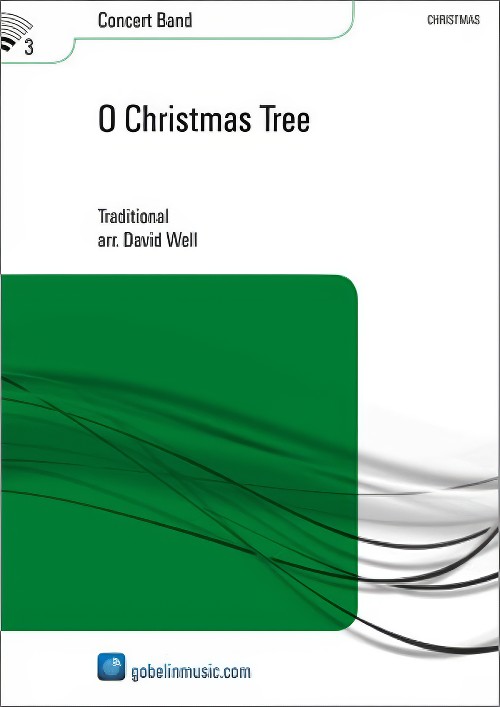 £94.99
£94.99O Christmas Tree (Concert Band - Score and Parts) - Well, David
The tradition of the Christmas tree in Western Europe dates back to a time long before any Christianization had taken place. During the severely cold winter nights, so it was believed, evil spirits tried to 'kill' nature. Needle-leaved trees were the only ones which kept their green colour throughout the year, and therefore became symbols of immortality. These 'living' trees, said to be the work of benign spirits, were brought into people's houses to ward off evil, life-threatening powers. In the 14th century people first started to decorate Christmas trees. It was a pagan custom, originated by the inhabitants of Alsace. This custom was taken over by the Church in the course of the 15th and 16th century. At first the decoration consisted mainly of edibles, such as apples and wafers, but later small presents were added. Legend has it that the reformer Martin Luther was the first person to decorate a Christmas tree with candles. The flickering candle flames were meant to create the image of a starry sky in which Christ's apparition could be recognized. The German organ-player Ernst Anschutz from Leipzig was the first person to notate the song 'O Tannenbaum', the melody being a well-known folk song. Next to 'Stille Nacht' 'O Tannenbaum' is the most famous German Christmas song, now known throughout the world. In the United States of America the melody of 'O Tannenbaum' has even been used in four States (among which the State of Maryland) for their State song. In David Well's arrangement the song is first heard as many of us know it. After this introduction, however, it is transformed into a solid rock version, and the beat has been changed. In the second part the familiar three-four time is back, but here the rhythm is different from the original. After the richly ornamented rock beat the basic theme can be heard once again and the composition is concluded in a festive manner.Duration: 3:15
Estimated dispatch 7-14 working days
-
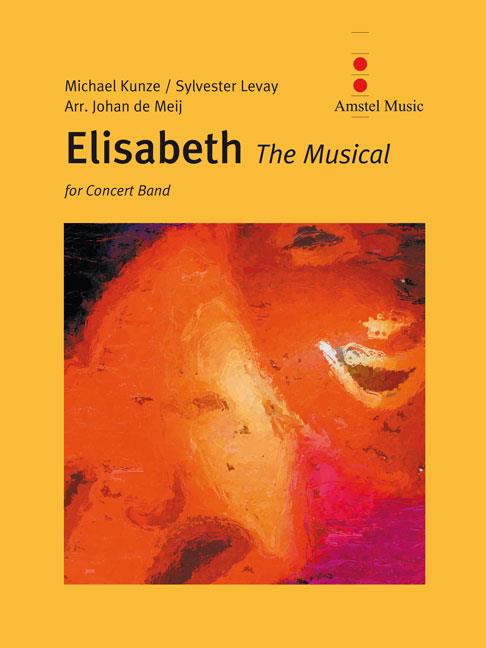 £118.99
£118.99Elisabeth (Concert Band - Score and Parts) - Levay & Kunze - De Meij, Johan
The world premiere of the musical Elisabeth took place in Vienna on September 3, 1992. From the great acclaim with which the musical was received, it became clear that the life of the Empress of Austria still appeals to the imagination. Although Elisabeth's life (1837-1898) as an Empress has a fairy-tale-like beginning, it takes a gloomy turn. In this production, Luigi Lucheni, the man who finally takes her life, tells her story. Death plays a major role throughout Elisabeth's life. In the musical, an equally mysterious and attractive man portrays the phenomenon of death, seducing her to the realm of death time after time. Elisabeth's life resembles a fairy tale when she marries the Emperor Franz Joseph at the age of sixteen. Her mother-in-law, Archduchess Sophie, does not make it easy on Elisabeth. But it is life itself that puts the Empress to the test. First, her youngest daughter dies. Then, not long after her son Rudolf is born, her happiness is clouded when her mother-in-law decides she must take pity on him. After her husband's unfaithfulness and Sophie's death, Elisabeth is so disillusioned that she chooses a travelling existence without realizing her husband and her son, Rudolf, miss her. Rudolf's loneliness is one of the reasons he commits suicide. The accumulation of disappointments in Elisabeth's life almost drives her into the arms of Death. In the end, however, it is Lucheni who kills her.Duration: 8.30
Estimated dispatch 7-14 working days
-
 £48.95
£48.95Echoes of Christmas (Concert Band - Score and Parts) - Black, Dave
Echoes of Christmas combines two Christmas favourites, While by My Sheep (or The Echo Carol) and God Rest Ye Merry, Gentlemen. The Echo Carol, so named because it is written in a call and response format, is presented here with initial statement by the brass which are then immediately echoed by the woodwinds. God Rest Ye Merry, Gentlemen features a canonic treatment of this holiday favorite, first in the flutes and clarinets and then the entire ensemble. Your audience will be echoing these Christmas carols long after your next holiday concert is over! Duration: 3.00
Estimated dispatch 7-14 working days
-
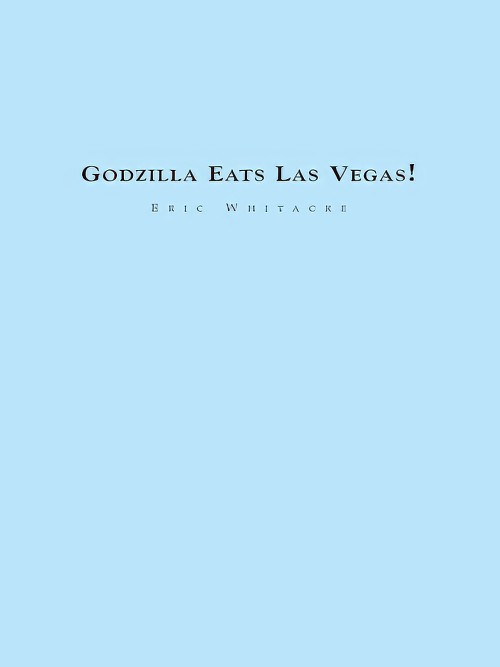 £189.99
£189.99Godzilla Eats Las Vegas (Concert Band - Score and Parts) - Whitacre, Eric
Note from Composer:It took me seven years to get my bachelor's degree from the University of Nevada, Las Vegas. By the time I graduated I was ready to eat Las Vegas.Tom Leslie asked me to write another piece for the group as I was leaving, and I thought it would be a blast to do something completely ridiculous. The players are called upon to scream in terror, dress like Elvises (Elvi), and play in about thirty different styles from mambo to cheesy lounge music. The audience follows a script that I wrote simulating a campy, over the top Godzilla movie (is there any other kind?).I wrote the bulk of the piece while in my first year at Juilliard, and no kidding, I used to act out the script every morning devouring animal crackers, wreaking havoc all over the breakfast table. The script was originally twice as long, and had an entire subplot devoted to a young scientist and his love interest. As I started to finish the piece, however, it didn't seem that funny and that story (along with an extended Elvis tribute) ended up on the cutting room floor.The idea that this piece is being played all over the world in such serious concert venues is the single funniest thing I have ever heard. It has been played on the steps of the Capitol by the United States Marine Band, by the Scottish National Wind Symphony (they play in kilts, so help me God), and I have a video of a Japanese audience visibly confused and shaken by the whole experience. Can you imagine? I'm laughing my head off even as I write this!Godzilla Eats Las Vegas! was commissioned by the University of Nevada Las Vegas, Thomas G. Leslie, conductor, and received its premiere November 28th, 1996.The performers are encouraged to go crazy: wear showgirl costumes, Elvis costumes, act out scenes on stage, use video and lighting - anything to get a laugh.
Estimated dispatch 7-14 working days
-
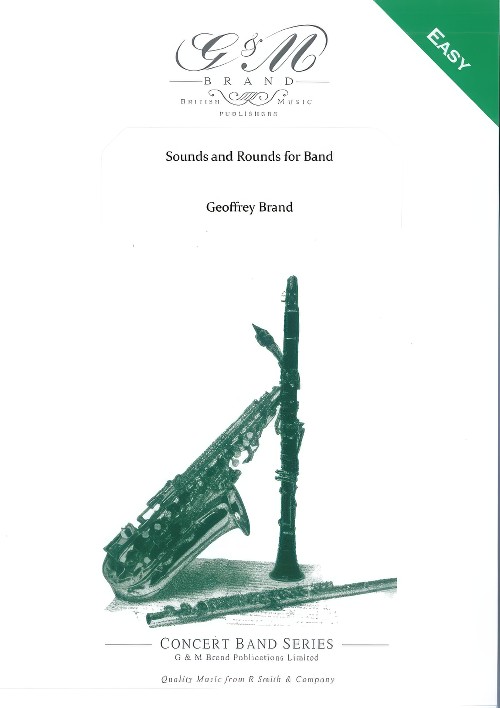 £59.95
£59.95Sounds and Rounds for Band (Concert Band - Score and Parts) - Brand, Geoffrey
If you have ever stood before a Concert Band and wondered how you may best help them to sound better then SOUNDS will help. SOUNDS are exercises designed to improve DYNAMICS, RHYTHM, CRESCENDO and DIMINUENDO, INTERVALS, RESTS and ACCENTS. The exercises can also be used for warm-up purposes. They are interesting to play whilst creating an awareness of some of the fundamentals of good performance. ROUNDS are a form of Canon in unison (or octaves) with the players entering at regular rhythmic periods. The first Rounds were printed in 1609 so people have enjoyed performing this form of music for a very long time and still do. Kookaburra comes from Australia, Row Row Row the Boat is English, Frre Jacques is French and in this version a variation on the original melody has been added which also works as a round and adds to the fun. A full score has been provided in order to facilitate rehearsal.
Estimated dispatch 7-14 working days
-
 £11.95
£11.95Sounds and Rounds for Band (Concert Band - Score Only) - Brand, Geoffrey
If you have ever stood before a Concert Band and wondered how you may best help them to sound better then SOUNDS will help. SOUNDS are exercises designed to improve DYNAMICS, RHYTHM, CRESCENDO and DIMINUENDO, INTERVALS, RESTS and ACCENTS. The exercises can also be used for warm-up purposes. They are interesting to play whilst creating an awareness of some of the fundamentals of good performance. ROUNDS are a form of Canon in unison (or octaves) with the players entering at regular rhythmic periods. The first Rounds were printed in 1609 so people have enjoyed performing this form of music for a very long time and still do. Kookaburra comes from Australia, Row Row Row the Boat is English, Frre Jacques is French and in this version a variation on the original melody has been added which also works as a round and adds to the fun. A full score has been provided in order to facilitate rehearsal.
Estimated dispatch 7-14 working days
-
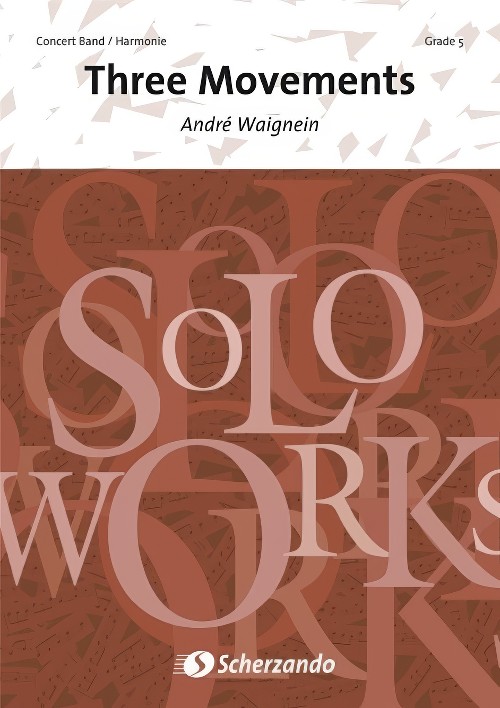 £248.99
£248.99Three Movements (Piano Solo with Concert Band - Score and Parts) - Waignein, Andre
These three movements for piano and band depict three stages of a musical journey. We set off on a long journey through the world of musical virtuosity in the style of Liszt : grand, lustrous and lyrical. The second stage is a peaceful stroll, the start of a dream. The colours are like a tender caress and the piano sketches transparent arabesques. This splendid impressionistic journey ends in two bright pink drops which evaporate just in time before the third and last movement explodes.The last movement is driven forward by a raging rhythm, as relentless as a war-dance. In a confrontation between the soloist and the orchestra all the inner strength of the composer comes to the surface so that the musicians in the end are breathless... but all the same, no less satisfied.Duration: 24:00
Estimated dispatch 7-14 working days
-
 £84.99
£84.99On the Movieset Wind Band Set (Score & Parts)
Glitter and glamour, good-looking people, a lot of Bling Bling and fast cars - images like these will cross our minds when we think of the movie world. However, reality proves to be different : as a rule, a tremendous amount of work will have been done on the set before a film is ready to be shown on the big screen. A visit to an actual movie set inspired John Emerson Blackstone to write a composition bearing the same name. He had both seen a number of characteristic attributes and heard the typical phrases used in film making, and he incorporated them into 'On the Movie Set' . In the first part, 'The Clapboard', a 'director's assistant' is supposed to shout "Quiet on the set'" and "Action!", as is done before a real scene is shot. Subsequently, in order to create the right atmosphere, the clacking of a 'Clapboard' should be heard. During a romantic scene we should be transported to another world by means of sweet sounds in the background, so romantic music is of course heard in the next part, 'Love Scene'. At the end of a long working day 'It's a wrap' is called on the set to inform everyone that the filming on that day is completed. Now there is only one more thing left to dream of : an Oscar..... Perf. Note: The use of the right props will add to the performance and appreciation of 'On the Movie Set'. A red carpet and a glamorous reception should give your audience the feeling they are attending a real 'opening night'! 09:30
Estimated dispatch 7-14 working days
-
 £248.99
£248.99The White Tower (Concert Band - Score and Parts)
The year is 1798 and thieves, robbers, and bandits prowl the countryside, wreaking havoc wherever they go and more often than not escaping without so much as a scratch. This was, however, not the case with a supposedly well-planned assault on the German town of Daaden, during which 20 long sought-after crooks from Germany, France, and Holland where captured. Otto M. Schwarz' exciting musical montage lets people experience the planning, assault, and attempted retreat first hand! 20:05
Estimated dispatch 7-14 working days
-
 £60.99
£60.99Spirit Of Adventure - Daniel Jones
The spirit of adventure is accurately portrayed in this grade 3 tour de force. It has all the elements players and conductors love: excitement, bold sounds, and interesting harmonies; yet, it avoids the pitfalls that so often lead to failure: rapidly changing and asymmetric rhythms, phrases too long for the students to navigate, and intricate articulations.
Estimated dispatch 7-14 working days
